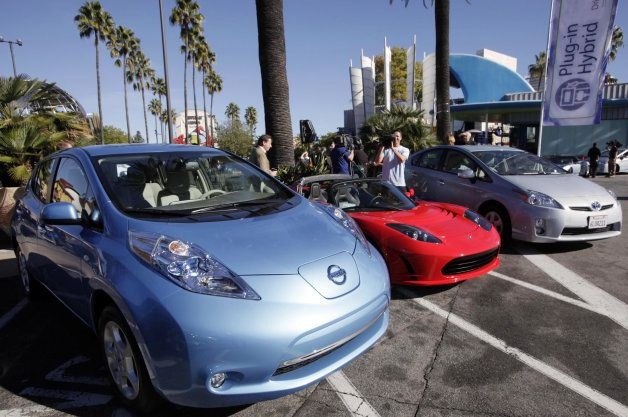
As fuel prices keep falling across the US, sales of fuel efficient vehicles keep going with them. ByAutoblogGreen's tally, the market for green cars, which includes diesels, is down 6.4 percent through November 2014. However, there is a bright spot in the bleak news. Plug-in sales are actually up for the year by about 30 percent. A report from the US Energy Information Administration, a branch of the Department of Energy, finds that this segment is still growing. Though, their popularity is still largely a West Coast phenomenon.
When looking at registrations as of 2013, the study found about 70,000 battery electric vehicles and 104,000 plug-in hybrids nationwide. While still a tiny percentage of the 226 million total, the segment shows expansion. The total for all plug-in vehicles (PEVs) among new sales was 0.4 percent in 2012, 0.6 percent in 2013 and 0.7 percent through 2014 so far.
About half of the nation's plug-ins reside in California, and the state boasts the highest rate of them in the US with about five out of every 1,000 vehicles there using an outlet to charge. Although, there are very good reasons for this, like the state's laws that mandating automakers sell zero-emissions models with the Zero Emission Vehicle (ZEV) Program. While some other states have decided to follow California's lead, most plug-in vehicles are not sold outside of the Golden State. California wants at least 15 percent of the cars there to be emissions-free by 2025.
Other states are showing improvement too. According to the study, Washington and Hawaii are the only two other places with three or more PEVs per 1,000 vehicles. Oregon, Georgia and Maryland come close though, with between two and three per thousand.
The figures also suggest the interesting effects that incentives can have on PEV sales. In addition to federal money, Californians can claim up to $2,500 for electric vehicles and $1,500 for plug-in hybrids. However, Washington puts more motivation behind pure EVs by making them exempt from the state's 6.5 percent sales and use tax. The intriguing result is pure electric vehicles actually outnumber plug-in hybrids in the state – a rather unique situation. Scroll below to read the EIA's full report.



